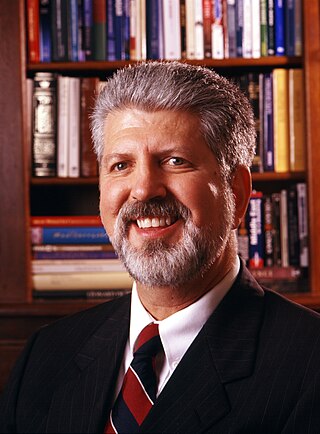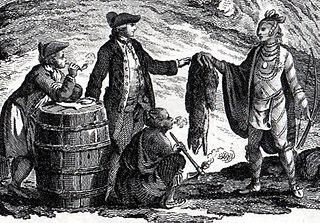Related Research Articles

Alcoholism is the continued drinking of alcohol despite negative results. Problematic use of alcohol has been mentioned in the earliest historical records, such as in ancient Egypt and in the Bible, and remains widespread; the World Health Organization (WHO) estimated there were 283 million people with alcohol use disorders worldwide as of 2016. The term alcoholism was first coined in 1852, but alcoholism and alcoholic are stigmatizing and discourage seeking treatment, so clinical diagnostic terms such as alcohol use disorder or alcohol dependence are used instead.

Recreational drug use is the use of one or more psychoactive drugs to induce an altered state of consciousness, either for pleasure or for some other casual purpose or pastime. When a psychoactive drug enters the user's body, it induces an intoxicating effect. Recreational drugs are commonly divided into three categories: depressants, stimulants, and hallucinogens.

The effects of cannabis are caused by chemical compounds in the cannabis plant, including 113 different cannabinoids such as tetrahydrocannabinol (THC) and 120 terpenes, which allow its drug to have various psychological and physiological effects on the human body. Different plants of the genus Cannabis contain different and often unpredictable concentrations of THC and other cannabinoids and hundreds of other molecules that have a pharmacological effect, so the final net effect cannot reliably be foreseen.

Alcohol abuse encompasses a spectrum of unhealthy drinking behaviors which range from consuming more than 2 drinks per day on average for men, or more than 1 drink per day on average for women, to binge drinking or alcohol use disorder.
The health effects of long-term alcohol consumption on health vary depending on the amount of ethanol consumed. Even light drinking poses health risks, but small amounts of alcohol may also have health benefits. Chronic heavy drinking causes severe health consequences which outweigh any potential benefits.
Lifestyle diseases can be defined as diseases linked with one's lifestyle. These diseases are non-communicable diseases. They are caused by lack of physical activity, unhealthy eating, alcohol, substance use disorders and smoking tobacco, which can lead to heart disease, stroke, obesity, type II diabetes and lung cancer. The diseases that appear to increase in frequency as countries become more industrialized and people live longer include Alzheimer's disease, arthritis, atherosclerosis, asthma, cancer, chronic liver disease or cirrhosis, chronic obstructive pulmonary disease, colitis, irritable bowel syndrome, type 2 diabetes, heart disease, hypertension, metabolic syndrome, chronic kidney failure, osteoporosis, PCOD, stroke, depression, obesity and vascular dementia.

The National Minimum Drinking Age Act of 1984 was passed by the United States Congress and was later signed into law by President Ronald Reagan on July 17, 1984. The act would punish any state that allowed persons under 21 years to purchase alcoholic beverages by reducing its annual federal highway apportionment by 10 percent. The law was later amended, lowering the penalty to 8 percent from fiscal year 2012 and beyond.
The gateway drug effect is a comprehensive catchphrase for the often observed effect that the use of a psychoactive substance is coupled to an increased probability of the use of further substances. Possible causes include biological alterations in the brain due to earlier substance exposure, as well as similar attitudes of people who use different substances, and therefore experience a "common liability to addiction". In 2020, the National Institute on Drug Abuse released a research report which supported allegations that marijuana is a "gateway" to more dangerous substance use; one of the peer-reviewed papers cited in the report claims that while "some studies have found that use of legal drugs or cannabis are not a requirement for the progression to other illicit drugs [...] most studies have supported the "gateway sequence"." However, a 2018 literature review conducted by the National Institute of Justice, which analyzed 23 peer-reviewed research studies, concluded "that existing statistical research and analysis relevant to the "gateway" hypothesis has produced mixed results", and that "no causal link between cannabis use and the use of other illicit drugs can be claimed at this time."

Cannabis, also known as marijuana or weed among other names, is a psychoactive drug from the cannabis plant. Native to Central or South Asia, the cannabis plant has been used as a drug for both recreational and entheogenic purposes and in various traditional medicines for centuries. Tetrahydrocannabinol (THC) is the main psychoactive component of cannabis, which is one of the 483 known compounds in the plant, including at least 65 other cannabinoids, such as cannabidiol (CBD). Cannabis can be used by smoking, vaporizing, within food, or as an extract.
Alcohol education is the practice of disseminating information about the effects of alcohol on health, as well as society and the family unit. It was introduced into the public schools by temperance organizations such as the Woman's Christian Temperance Union in the late 19th century. Initially, alcohol education focused on how the consumption of alcoholic beverages affected society, as well as the family unit. In the 1930s, this came to also incorporate education pertaining to alcohol's effects on health. For example, even light and moderate alcohol consumption increases cancer risk in individuals. Organizations such as the National Institute on Alcohol Abuse and Alcoholism in the United States were founded to promulgate alcohol education alongside those of the temperance movement, such as the American Council on Alcohol Problems.

Substance abuse prevention, also known as drug abuse prevention, is a process that attempts to prevent the onset of substance use or limit the development of problems associated with using psychoactive substances. Prevention efforts may focus on the individual or their surroundings. A concept that is known as "environmental prevention" focuses on changing community conditions or policies so that the availability of substances is reduced as well as the demand. Individual Substance Abuse Prevention, also known as drug abuse prevention involves numerous different sessions depending on the individual to help cease or reduce the use of substances. The time period to help a specific individual can vary based upon many aspects of an individual. The type of Prevention efforts should be based upon the individual's necessities which can also vary. Substance use prevention efforts typically focus on minors and young adults – especially between 12–35 years of age. Substances typically targeted by preventive efforts include alcohol, tobacco, marijuana, inhalants, coke, methamphetamine, steroids, club drugs, and opioids. Community advocacy against substance use is imperative due to the significant increase in opioid overdoses in the United States alone. It has been estimated that about one hundred and thirty individuals continue to lose their lives daily due to opioid overdoses alone.

Claude Robert Cloninger is an American psychiatrist and geneticist noted for his research on the biological, psychological, social, and spiritual foundation of both mental health and mental illness. He previously held the Wallace Renard Professorship of Psychiatry, and served as professor of psychology and genetics, as well as director of the Sansone Family Center for Well-Being at Washington University in St. Louis. Cloninger is a member of the evolutionary, neuroscience, and statistical genetics programs of the Division of Biology and Biomedical Sciences at Washington University, and is recognized as an expert clinician in the treatment of general psychopathology, substance dependence, and personality disorders. Dr. Cloninger is currently professor emeritus.

Binge drinking, or heavy episodic drinking, is drinking alcoholic beverages with an intention of becoming intoxicated by heavy consumption of alcohol over a short period of time, but definitions vary considerably.

Lee Nelken Robins was an American professor of social science in psychiatry and a leader in psychiatric epidemiology research. She was affiliated with the Washington University in St. Louis for more than 50 years from 1954 until 2007.

The long-term effects of cannabis have been the subject of ongoing debate. Because cannabis is illegal in most countries, clinical research presents a challenge and there is limited evidence from which to draw conclusions. In 2017, the U.S. National Academies of Sciences, Engineering, and Medicine issued a report summarizing much of the published literature on health effects of cannabis, into categories regarded as conclusive, substantial, moderate, limited and of no or insufficient evidence to support an association with a particular outcome.
The legal drinking age varies from country to country. In the United States, the legal drinking age is currently 21. To curb excessive alcohol consumption by younger people, instead of raising the drinking age, other countries have raised the prices of alcohol beverages and encouraged the general public to drink less. Setting a legal drinking age of 21 is designed to discourage reckless alcohol consumption by youth, limiting consumption to those who are more mature, who can be expected to make reasonable and wise decisions when it comes to drinking.

Ovide F. Pomerleau is an American psychologist who pioneered the development of behavioral medicine. He is best known for his work on self-management problems and addiction, focusing on the behavioral, biological, and genetic bases of tobacco smoking and nicotine dependence.

Some Native Americans in the United States have been harmed by, or become addicted to, drinking alcohol. Among contemporary Native Americans and Alaska Natives, 11.7% of all deaths are related to alcohol. By comparison, about 5.9% of global deaths are attributable to alcohol consumption. Because of negative stereotypes and biases based on race and social class, generalizations and myths abound around the topic of Native American alcohol misuse.
Many students attending colleges, universities, and other higher education institutions consume alcoholic beverages. The laws and social culture around this practice vary by country and institution type, and within an institution, some students may drink heavily whereas others may not drink at all. In the United States, drinking tends to be particularly associated with fraternities.
Katherine Margaret Keyes is an American epidemiologist. She is a professor of epidemiology at the Columbia University Mailman School of Public Health. Her research focuses on psychiatric and substance use epidemiology across the lifecourse, including early origins of child and adult health and cross-generational cohort effects on substance use, mental health, and injury outcomes including suicide and overdose.
References
- 1 2 Psychiatry, Washington University School of Medicine | Department of. "Faculty Details | Psychiatry | Washington University". psychiatry.wustl.edu. Retrieved 2017-06-25.
- ↑ Melnick, Meredith. "Study: Another Reason to Keep the Drinking Age at 21". Time. ISSN 0040-781X . Retrieved 2017-06-25.
- ↑ "Lower drinking ages lead to more binge drinking | The Source | Washington University in St. Louis". The Source. 2013-02-06. Retrieved 2017-06-25.
- ↑ "Evidence on the Effects of Youth Access Restrictions".
- ↑ Kitchener, Caroline (1 August 2013). "'There Is No Pressure for a Girl to Be a Girl'". The Atlantic. Retrieved 20 February 2016.
- ↑ "Alcoholism Gender Gap Is Closing". The Washington Post. 2008-05-06. ISSN 0190-8286 . Retrieved 2017-06-25.
- ↑ "Initiating drinking at younger age heightens women's risk for alcohol dependence | The Source | Washington University in St. Louis". The Source. 2008-06-04. Retrieved 2017-06-25.
- ↑ Grucza, R. A.; Plunk, A. D.; Krauss, M. J.; Cavazos-Rehg, P. A.; Deak, J.; Gebhardt, K.; Chaloupka, F. J.; Bierut, L. J. (16 July 2014). "Probing the Smoking-Suicide Association: Do Smoking Policy Interventions Affect Suicide Risk?". Nicotine & Tobacco Research. 16 (11): 1487–1494. doi:10.1093/ntr/ntu106. PMC 4271090 . PMID 25031313.
- ↑ LiveScience.com (17 July 2014). "Anti-smoking policies may also fight suicide". Fox News. Retrieved 20 February 2016.
- ↑ Firger, Jessica (17 July 2014). "Smokers at higher risk for suicide". CBS News. Retrieved 20 February 2016.
- ↑ HealthDay (10 February 2016). "Rise in Marijuana Use Among U.S. Adults Less Than Reported: Study". U.S. News & World Report. Retrieved 20 February 2016.
- ↑ "Teen problems with pot declining | Washington University School of Medicine in St. Louis". Washington University School of Medicine in St. Louis. Retrieved 2017-06-25.
- ↑ "Richard Grucza". Washington University School of Medicine. Retrieved 20 February 2016.
- ↑ "Richard Grucza, PhD, MPE". Washington University School of Medicine. Retrieved 20 February 2016.